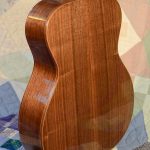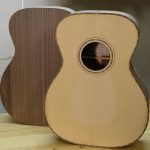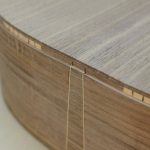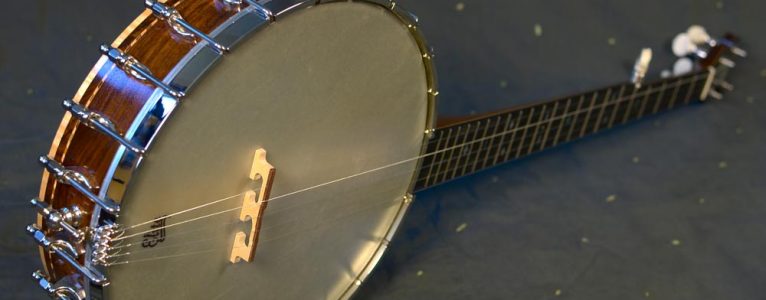Tag: walnut
I’ve made nice progress on a 14-fret auditorium and an orchestra guitar, both made of lovely air-dried walnut. What’s the difference between those models? Mostly scale length. The bodies have the same shape, but the top bracing has been shifted accordingly. (Here’s a comparison graphic of my model sizes.) I used a different rosette and purfling design so that I wouldn’t mix them up at a critical moment.
This pair also uses a hybridized bracing scheme that relies on the X-brace for the overall structure but uses a Torres-inspired lower fan in the belly area. I’ve been very happy with the guitars I’ve built with this scheme, and on this pair I’ve even trimmed down the lower legs of the X-brace a bit more because the fan structure does a nice job of resisting the torque of the strings on the bridge.
The bodies are in good shape, and the necks are well under way. I hope to have these guitars finished in early June. The price will be $2600 for either guitar.
Just in time to ring in the New Year, the mermaid banjo was strung and ready to play.
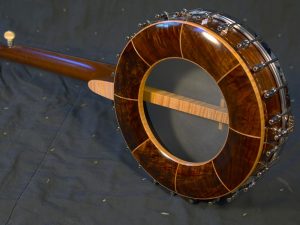
She’s surprisingly resonant, with just the balance of tone with percussion we’d hoped for. Bluegrass banjos, with their hard resonators and snare-drum-tight heads, tend to be brash and sharp; old-time banjos tend to err in the opposite direction, with large pots and loose heads to create a sound that’s more thump than tone. Amber had chosen this pot in the hopes of a goldilocks-like compromise between the two that would suit her light, melodic clawhammer style. Continue reading “Mermaid Banjo Splashdown”



